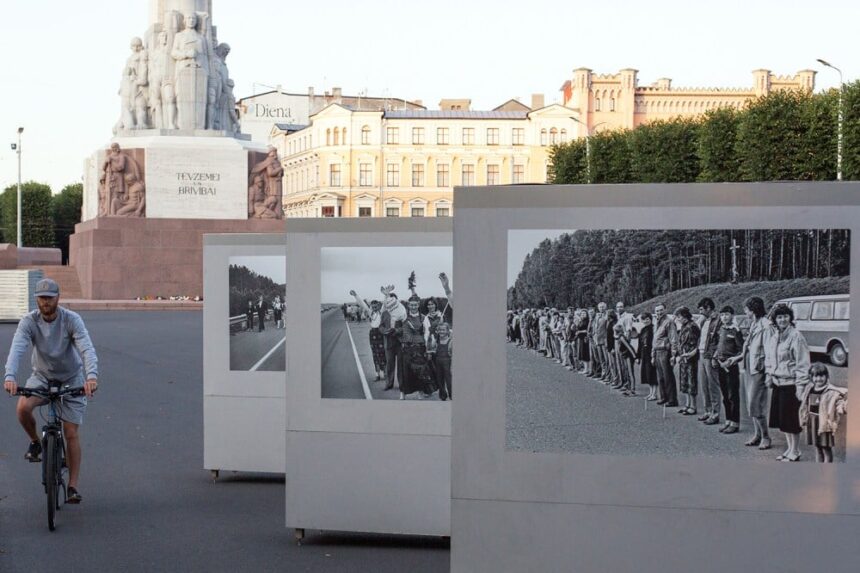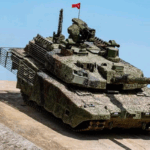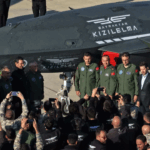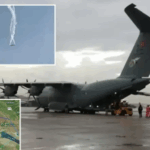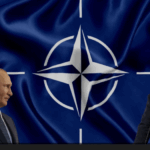Summary by Geopolist | Istanbul Center for Geopolitics:
The article gives a historical and geopolitical examination of Russia’s pattern of occupation and withdrawal from various areas, with a special emphasis on its relations with Estonia, Latvia, and Ukraine. It talks about important historical occurrences where Russia withdrew from areas, frequently as a result of political or economic pressure, and makes a connection between these occurrences and the current state of affairs in Ukraine.
The focus of the essay is the current conflict in Ukraine, which serves as a sobering reminder to Russia’s neighbours of the transience of their freedom. It criticizes Western actions and issues a warning that such tactics could provoke more Russian aggression, pointing specifically to the U.S. restrictions on Ukraine’s military capability. The paper also emphasizes the relevance of previously successful diplomatic and military initiatives, implying that similar approaches may be required to assure future security against Russian expansionism.
Key points include the historical withdrawal of Russian troops from the Baltic states following the collapse of the Soviet Union, the strategic significance of historical events such as the Finnish wars in understanding Russian motivations, and the broader implications for NATO and EU policies toward Russia. The article finishes by musing on the likely future of the Russian empire and the continuous need for vigilance and preparedness by its neighbour.
Read the full article below.
History Shows Giving Land to Russia Won’t Bring Peace in Ukraine
Today, Aug. 31, Estonians and Latvians celebrate 30 years since the departure of Russian troops from their territories, which ended half a century of occupation. The ongoing war in Ukraine is a daily reminder for Russia’s neighbors that their freedom must not be taken for granted. History suggests that Russians only withdraw from occupied territories for one of two reasons: Either they are driven out by force or their own cost-benefit calculus compels them to leave. In the latter case, the only major territorial withdrawals in Russian history have happened when regime collapse has radically changed this cost-benefit calculus. If Washington fails to recognize this long-established pattern and continues to severely constrain Kyiv’s defense in hopes for some future reset in relations with Moscow, the next wave of Russian aggression is all but ensured.
Today, Aug. 31, Estonians and Latvians celebrate 30 years since the departure of Russian troops from their territories, which ended half a century of occupation. The ongoing war in Ukraine is a daily reminder for Russia’s neighbors that their freedom must not be taken for granted. History suggests that Russians only withdraw from occupied territories for one of two reasons: Either they are driven out by force or their own cost-benefit calculus compels them to leave. In the latter case, the only major territorial withdrawals in Russian history have happened when regime collapse has radically changed this cost-benefit calculus. If Washington fails to recognize this long-established pattern and continues to severely constrain Kyiv’s defense in hopes for some future reset in relations with Moscow, the next wave of Russian aggression is all but ensured.
The Russian empire—whether the tsarist or Soviet variant—collapsed twice in the 20th century: in 1917, when a communist coup dethroned the tsar, and in 1991, when another, unsuccessful coup was the final death knell for the Soviet Union. Both events created a window of opportunity for many smaller nations to break free. Moscow withdrew from many of its non-Russian territories not because it no longer wanted to have an empire, but because it no longer had the means to keep these territories under its control.
Russia is currently occupying more than 42,000 square miles—about the size of South Korea—or approximately 18 percent of Ukraine’s territory. Ukrainians aim at regaining all of it and see full restoration of their territorial integrity as an essential component of a just peace. Yet their hopes to reconquer much of their land have withered, not least due to strict limitations imposed, mainly by the United States, on the Ukrainians’ use of Western weapons. Ukraine’s surprise incursion into Russia’s Kursk region and quick capture of about 500 square miles of Russian soil has changed the outlook: Now, an exchange of territories may become an element of eventual negotiations. Russian leader Vladimir Putin’s calculus is still in favor of continuing the war, but the Ukrainians are finding new ways to increase the cost to Moscow and upend the narrative that Russia is marching towards an inevitable victory.
The historical experience of Russia’s neighbors provides some clues to Ukraine’s chances to regain occupied territories or achieve peace through territorial concessions.
The last Soviet leader, Mikhail Gorbachev, decided to let the Soviet satellite states in Central and Southeast Europe go and allowed an unprecedented degree of openness within the Soviet Union. But even the great reformer Gorbachev was unwilling to give up any of the Soviet republics, including the three Baltic states. A leader of the Estonian national movement at the time, Marju Lauristin, recalled a personal conversation with Gorbachev, in which she explained Estonia’s aspirations for independence and received a straight reply. He could not give away what the Russian nation had gained, she recalled him saying.
The Baltic states grasped the chaos and aftermath of the 1991 Soviet coup to restore their independence, but that was followed by a tense three-year struggle to achieve the withdrawal of Russian troops. Diplomatic efforts took place in parallel with the departure of Moscow’s forces from the former satellite states, including more than 330,000 soldiers leaving East Germany by 1994. As we know, Russia’s withdrawal from Germany was a most humiliating experience for the young Putin, who was traumatized by the East Germans’ peaceful uprising against their communist regime while he was stationed there as a KGB agent.
Estonia was the last European country to secure the departure of Russian troops through a July 1994 agreement between the two countries’ presidents at the time, Boris Yeltsin and Lennart Meri. Both leaders took considerable risks by agreeing to a deal that was unpopular in their respective countries. Many in the Russian opposition, diplomatic establishment, and security services were highly critical of Yeltsin’s decision. On the Estonian side, the deal involved painful concessions, notably allowing retired Soviet military personnel and their families, altogether more than 10,000 people, to stay in Estonia and enjoy social benefits. Similar unpopular conditions were also accepted by Latvia. Although the departure of occupying troops was a dream come true for Estonians, Meri faced criticism at home for the concessions. It took great diplomatic skills and political courage to achieve the final stage of de-occupation, which paved the way for Estonia’s accession to NATO and the European Union.
The motive for Yeltsin was most probably his wish to maintain good relations with the West—especially the economic and financial support on which Russia depended at the time—while the United States and Germany put friendly pressure on him to withdraw his forces from the Baltic states. Any such motive is utterly irrelevant for the current Russian leadership; there is no chance that Western countries could persuade the Putin regime to deliberately leave Ukraine in hopes of improved relations or economic benefits such as sanctions relief.
A Soviet soldier frozen to death after being shot by a Finnish sniper during the Soviet invasion of Finland, circa 1940. Keystone/Getty Images Archive
For some of Russia’s neighbors, giving up territory was the price to pay for independence. However, territorial concessions without being prepared to resist further Russian demands has not been a recipe for stability. In 1939, then-independent Estonia gave in to Soviet demands to establish military bases on its territory in the vain hope of avoiding war. The concessions did not help, and the Baltics were soon occupied and annexed. Finland refused similar demands for the stationing of Soviet troops and was attacked by the Red Army. Yet eventually, Finland sustained its independence after fiercely fighting for it. The Baltics learned a bitter lesson. Today they are prepared to fight back from the first moment of aggression.
Finland gave up one-tenth of its territory as a result of its two wars with the Soviet Union, but it would be wrong to present this as an example of trading land for peace. The Soviet Union did not stop fighting because it was content with the concessions; it stopped because it was unable to defeat the Finns and conquer more land. The Red Army became too exhausted to carry on, not least because it was also fighting on other fronts of World War II.
As part of the armistice agreement that ended the Soviet-Finnish fighting in September 1944, Finland leased to the Soviet Union the strategically valuable Porkkala peninsula, located just 20 miles from Helsinki. Although the lease was set for 50 years, the Soviets returned Porkkala in 1956, which looks like a rare example of a voluntary Russian withdrawal. The decision was part of the thaw under Soviet leader Nikita Khrushchev, who succeeded Joseph Stalin in 1953. The case shows that a new leader who is critical of his predecessor may sometimes be favorable to new openings.
However, in subsequent years the Kremlin continued attempts to subsume Finland under tighter Soviet control, successfully interfering in its domestic politics and forcing it to align much of its foreign policy with Russia’s but failing to push the country closer to defense cooperation. Finland achieved Soviet recognition of its neutral status only as part of the Conference on Security and Cooperation in Europe held in Helsinki in 1975.
Another Russian neighbor, Japan, has also learned that Moscow does not give up territories under its control as a gesture of goodwill. Under former Prime Minister Shinzo Abe, Japan made extensive efforts in the 2000s and 2010s to foster friendly and mutually beneficial relations with Putin’s regime. Abe aimed to finally settle the two countries’ territorial dispute over the four southernmost Kuril Islands, annexed by the Soviet Union at the end of World War II. In the hope of splitting the difference and regaining two of the islands, Japan went to great lengths in courting Putin and avoiding any criticism of Russia, including after Russia’s illegal annexation of Crimea and the start of the war in eastern Ukraine. In March 2022, Russia announced that it did not intend to continue the talks and practically ruled out giving up any of its territories, with Russian Security Council Deputy Chairman Dmitry Medvedev stating that “negotiations about the Kurils always had a ritualistic character”.
Russian soldiers carry the coffin of 20-year-old Nikita Avrov during his funeral at a church in Luga, Russia, on April 11, 2022.AFP via Getty Images
So far, the West has been surprised by Russia’s ability to bear the heavy cost for its invasion of Ukraine. In Western societies, human life is priceless; in Russia, it is cheap. The Russian regime has been able to rely on seemingly endless waves of expendable soldiers and a harsh redirection of its economy to defense production in ways that would be far too costly for any democratic leader. What can be fatal for a Russian leader, however, is any perceived weakness and the failure to uphold Russia’s greatness. Most Russians want to live in a great country that dominates others, and they are ready to accept sacrifices for this cause, as documented in detail in books by Svetlana Alexievich, Jade McGlynn, and others.
Western leaders have talked a lot about the need to raise the cost of Russian aggression. But they have failed to effectively implement economic sanctions and have still not allowed Ukraine to use Western long-range weapons to attack military targets on Russian territory. By bringing the war to Russia nonetheless, Ukraine has proven that there is space to be bolder and more innovative in making the Russians pay a painful price for their desired greatness—a greatness that is built on invading and occupying other nations.
Russia is not going to withdraw from Ukraine unless it is forced to go—or to pay an unbearable price to stay. There is absolutely nothing in Russian history or recent behavior that suggests Moscow could be expected to negotiate in good faith to reach a compromise. Some territorial concessions from Ukraine may eventually be the price worth paying for peace and freedom—but this remains moot until Russia first gets to the point where it believes that further aggression can bring no gains.
Full restoration of Ukraine’s territorial integrity will likely require another collapse of the Russian empire. It may be years ahead, but Russia’s historical trajectory suggests that it will happen at some point, as the country has shown itself to be incapable of correcting course through evolution rather than revolution. A Western “reset” with the cAurrent regime will not be possible without sacrificing Ukraine’s independence and the core principles of the European security order, including the principles of sovereignty and territorial integrity.
Whether losing Ukraine will be the final death toll for the Russian empire, only time will tell. And even then, Russia’s neighbors will always have to be prepared for its violent imperialism to rebound.
By Kristi Raik
Source: Foreign Policy

